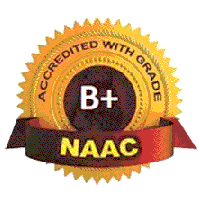Latest News
Placement » CREATING YOUR RÉSUMÉ
CREATING YOUR RÉSUMÉ
Creating your résumé is the first step to getting a job. Learn exactly what goes into this important document and start your career search off on the right foot by creating your own résumé.
STEP-BY-STEP RÉSUMÉ BREAKDOWN
A résumé is a one-page summary of your work and school experiences. Employers match your résumé against their job openings to evaluate if you'd be a good fit. As such, it's important to make your résumé a good representation of yourself. Here's how, step by step:
1. Decide Which Type Of Résumé You Want.
There are three types of résumés: chronological, functional and combination. You might want to consider more than one format of résumé if you're applying for multiple jobs.
- Chronologicalis the most traditional format and lists experiences according to the order in which they took place. These résumés generally appeal to older readers and may be best suited for a conservative field.
- Functionalis a type of résumé that lists your experiences according to skill. This is the format to use if you're changing career direction (and lack direct work experience). Because it displays your skills first, your work experience, or lack thereof, is not the main focus.
- Combination combines the best aspects of the chronological and functional styles. Be careful with length for this format; the résumé can quickly get long.
2. Create A Header.
A header should include your name, phone number and email address. You can also include your mailing address, but leave it out if you plan to post your résumé online.
- Use a phone number that you plan to answer and change your voicemail to a more professional message if necessary.
- Make sure your email address is professional. If your current email address.
3. Write A Summary.
In one or two sentences, summarize your work experience and relevant skills. Keep this strong and simple.
- The summary can be useful to explain why you're applying for a role that is a departure from your career path.
- You don't have to include a summary, especially if your experience speaks for itself and is relevant to the jobs you're applying for.
4. List Your Experiences Or Skills.
5. List Your Activities.
6. List Your Education.
7. List Any Awards You've Won And When You Won Them.
When you've been recognized by someone else, you should let potential employers know about it. But you shouldn't worry if you haven't received any awards; just skip this section.
8. List Your Personal Interests.
- This section shows you're a well-rounded person who people would want to know and work with.
- Employers often use this section at the start of an interview to break the ice.
- This résumé step is considered optional. If you're having trouble coming up with interests, or feel your résumé is already too long, feel free to leave it off.
SUBMITTING YOUR RÉSUMÉ
When it comes to applying for a job, there are several ways you can share your résumé with an employer. Make sure you're aware of these dos and don'ts to ensure your hard work is represented clearly.
Saving Your Résumé As A PDF
Most employers prefer to receive résumés in the Portable Document Format (PDF). To create yours, look for the "Save as PDF" or "Print to PDF" option in your word processor. Review the file carefully to make sure your formatting is preserved.
Emailing A Résumé
When emailing a résumé, you will likely be asked to send it as an attachment. Review the job listing carefully to see if there is a preferred format; most likely, employers will ask for a PDF.
Posting A Résumé
When submitting your résumé to a human resources website, review the upload instructions; the PDF is the most common format here as well.
Another consideration when submitting your résumé online is using job-specific keywords. Employers often search résumé banks for special words or requirements specific to a job description.
PRINTING YOUR RÉSUMÉ
It's a good idea to have printed copies of your résumé on hand when you go on interviews. Start with a well-formatted document and make sure it has been proof read.




.jpg)



.jpg)
.jpeg)
.jpeg)
.jpeg)